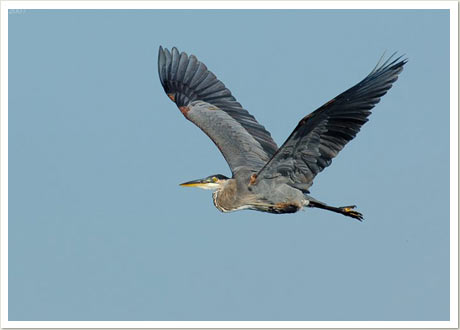|
| Great Blue Heron |
PHOTO: 1 2 |
 |
|
 |
 |
| Great Blue Herons can be seen on Plymouth Beach throughout the year, but are most common from August until October. During this time, herons from breeding colonies throughout inland New England arrive at the beach to feed on the abundant fish in the shallows. Great Blue Herons on the beach from May until July are non-breeding juveniles. In winter, a few linger and try to survive bitter cold and frozen bays, but most head for points further south. Great Blue Herons feed heavily on fish, but also eat other small animals, even small mammals. |
|
|